
6.7 secs
Just three years ago, the cord was being cut for plug-in hybrid electric vehicles (PHEVs) in Australia. Demand was tepid, and even Mercedes-Benz quietly opted to not replace plug-in versions of its all-important GLC SUV and C-Class sedan as it ushered in new generations of each, citing sluggish sales.
Just three years later, PHEVs are back – in a big way. While PHEVs comprised just four percent of the Australian new car market as of September 2025, it’s by far and away the fastest-growing powertrain type. Sales of diesel, petrol and electric vehicles are all down year-to-date – except PHEV, up 143 percent.
The reasons why are a story all on its own, but Mercedes-Benz is plugging back into this resurgent trend with PHEV models freshly landed in Australia: the GLC350e and C350e, both packing a feisty 230kW/550Nm and more than 100km of electric-only range.
The GLC in particular – Mercedes-Benz’s top-seller in Australia – must do well if the brand is to reel in German arch-rivals BMW, whose pragmatic approach of hedging bets across EVs, combustion engines, diesels and PHEVs has paid off. BMW is on-track to be Australia’s top-selling prestige marque in 2025, as it was in 2024 and 2023, soundly beating Audi, Mercedes-Benz and Lexus.
In this review, Open Road tests both the GLC350e 4MATIC and rear-drive C350e.
The GLC350e starts from $99,900 before on-road costs – importantly undercutting its nemesis the 220kW BMW X3 30e by a sound $4900.
The C350e starts from $98,200 before on-road costs. If you’re after a plug-in hybrid, prestige medium sedan, the C350e really has the market cornered for now. BMW axed its plug-in hybrid 330e early 2024 and hasn’t replaced it. And that’s about it.
Bread, milk and Mercedes-Benz – the price of everything has gone up. Just five years ago, a 235kW/700Nm GLC300e plug-in hybrid (with 43km of range) was $82,890. Today, the price has increased more than $17,000. Mercedes-Benz would argue you get a totally new generation, safer car with more standard equipment and technology in 2025.
Servicing isn’t cheap, either. A five-year service plan for the GLC is $7350 while the C-Class is a similarly lofty $6890. Service intervals for both are 12 months or 25,000km.
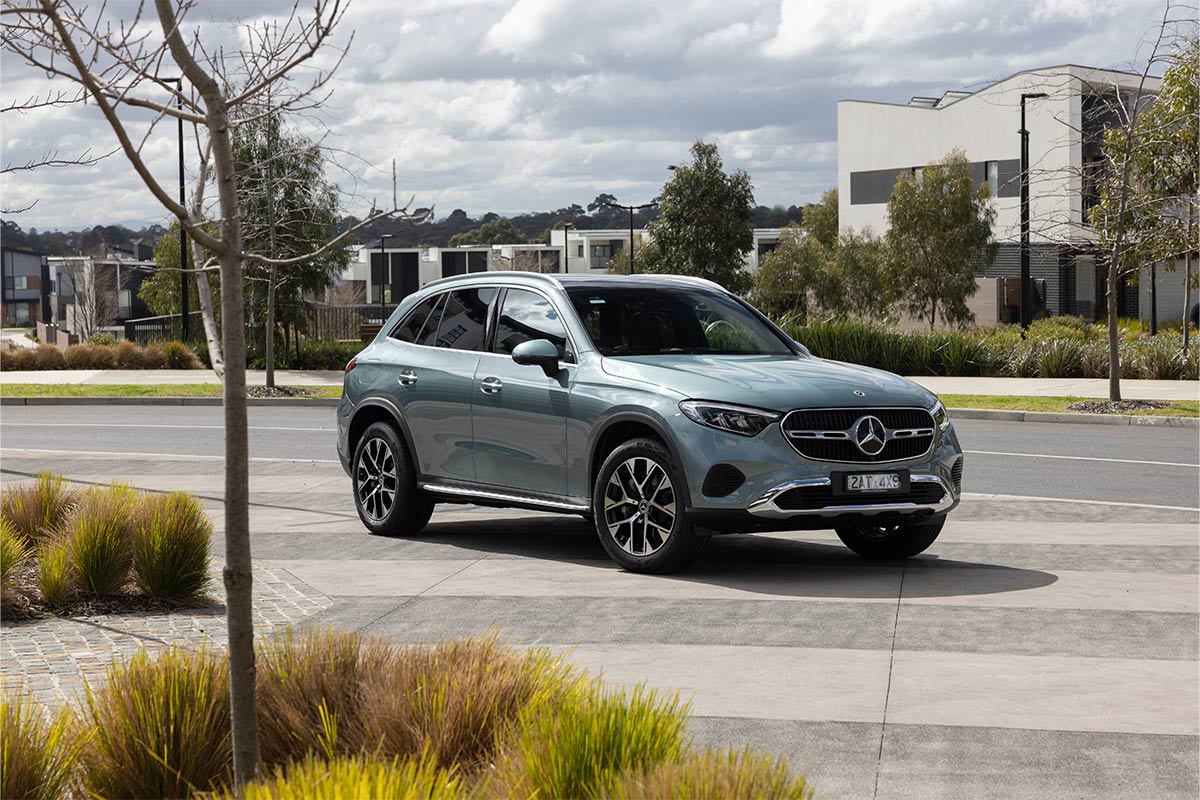
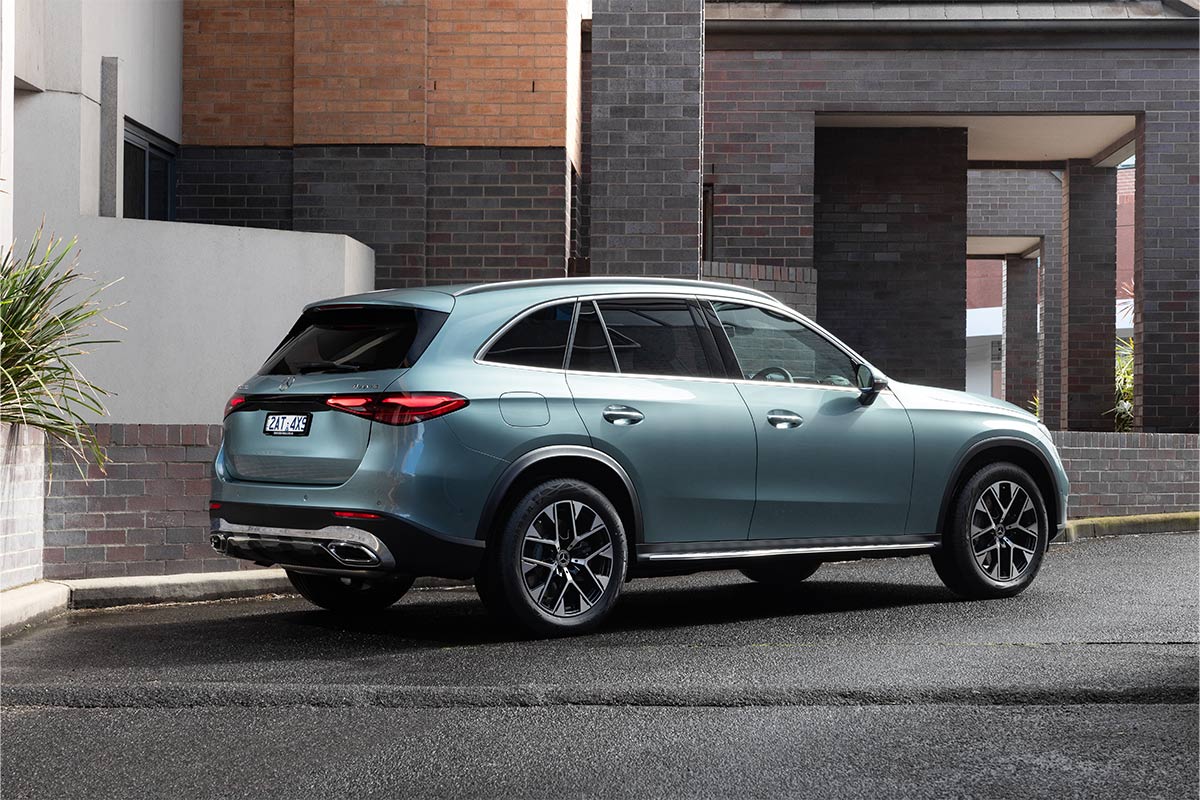
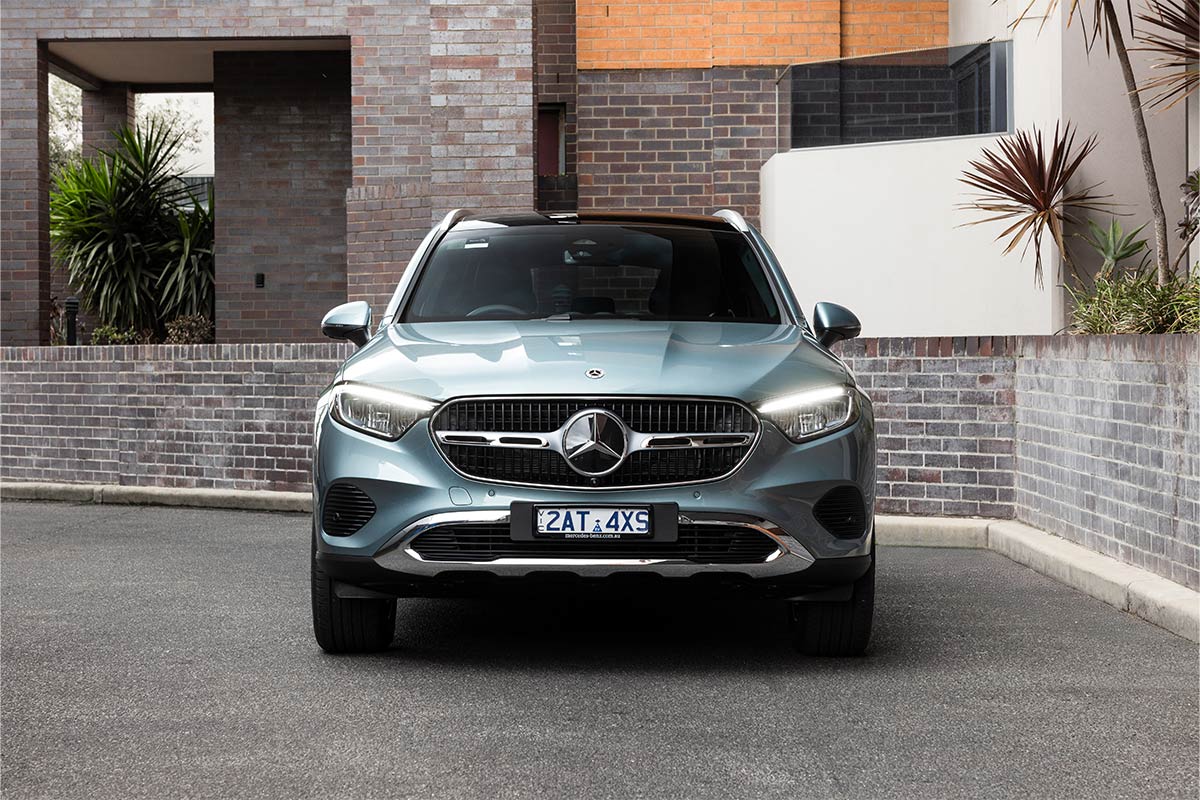
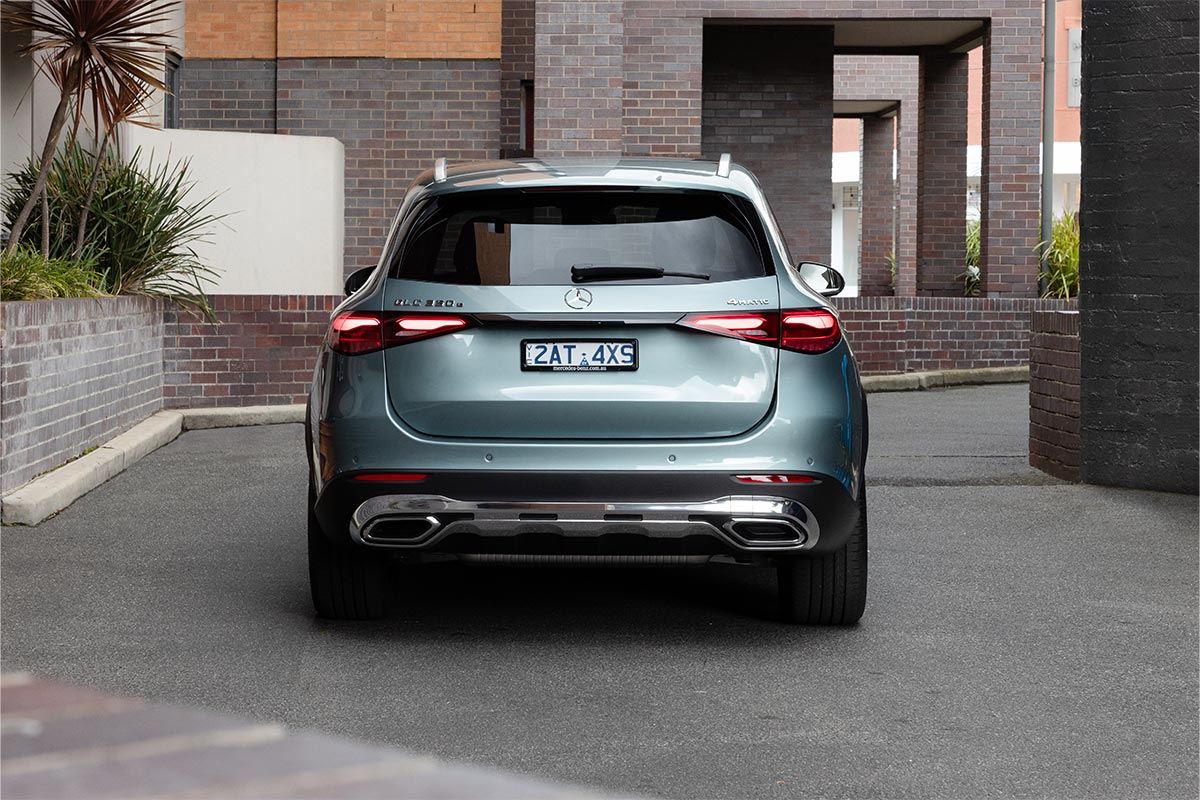
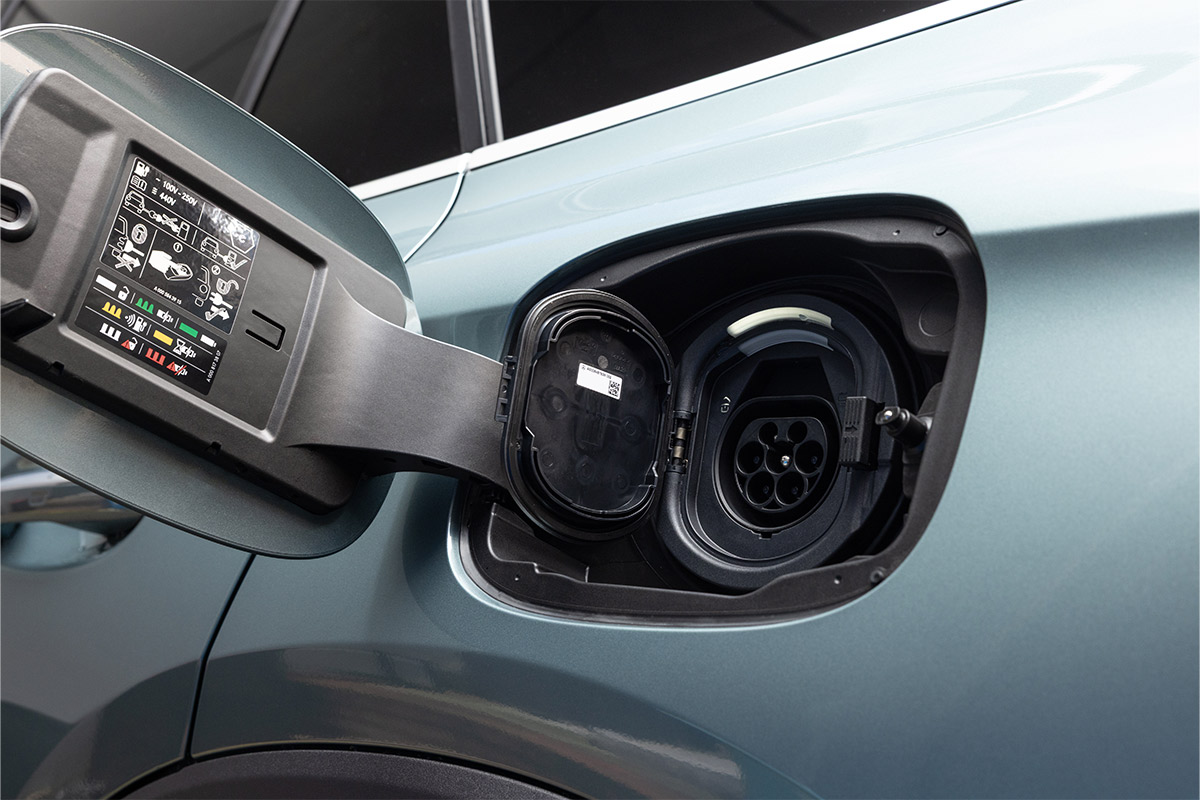
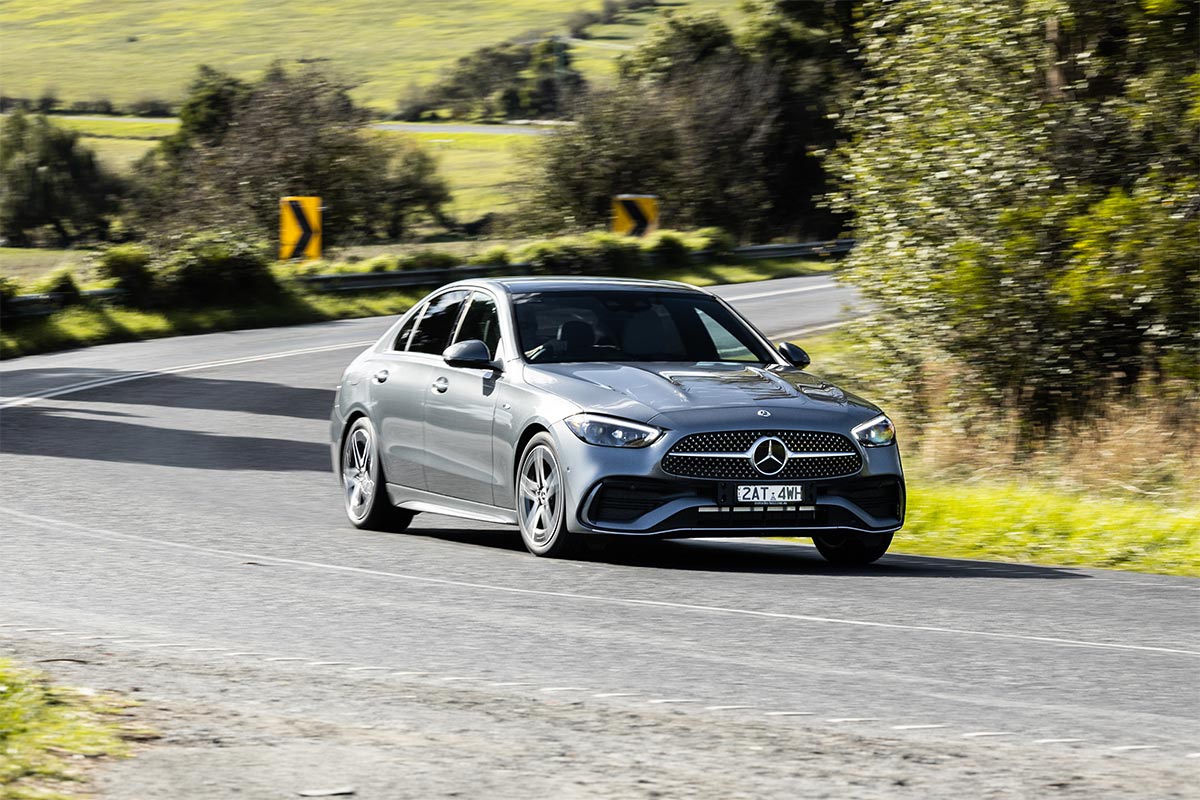
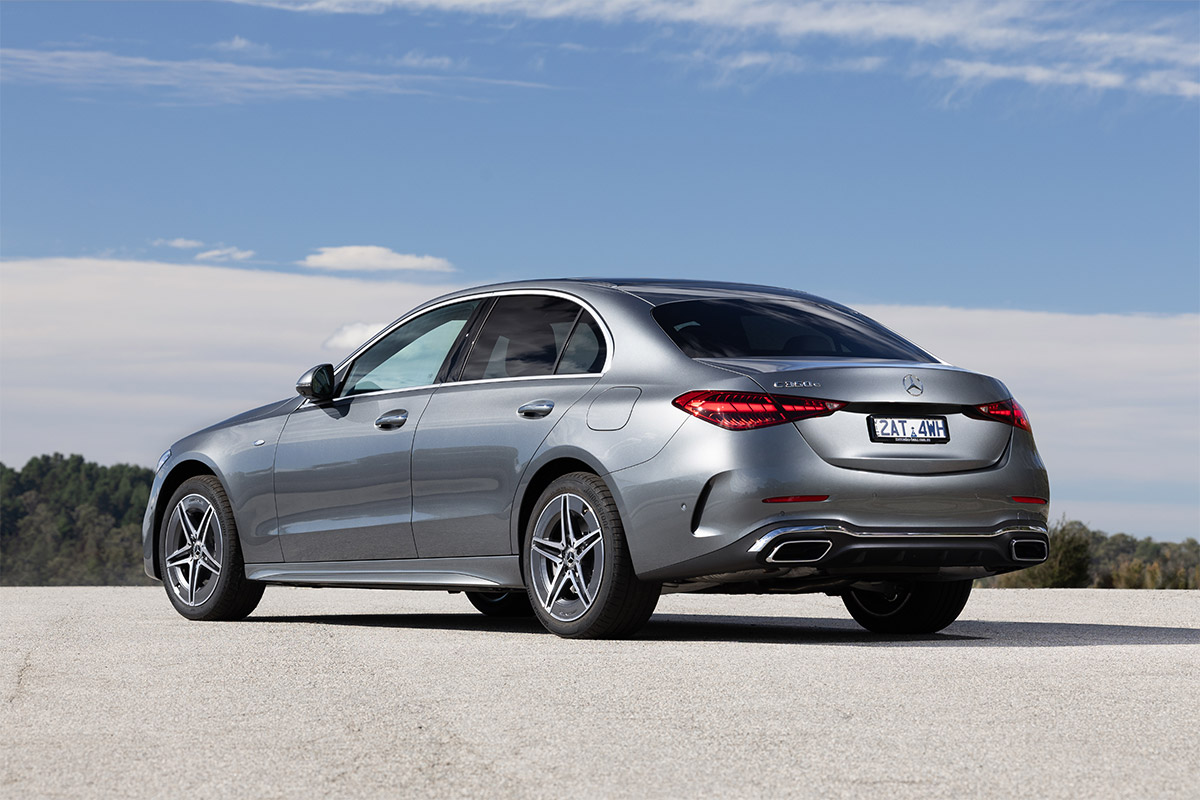
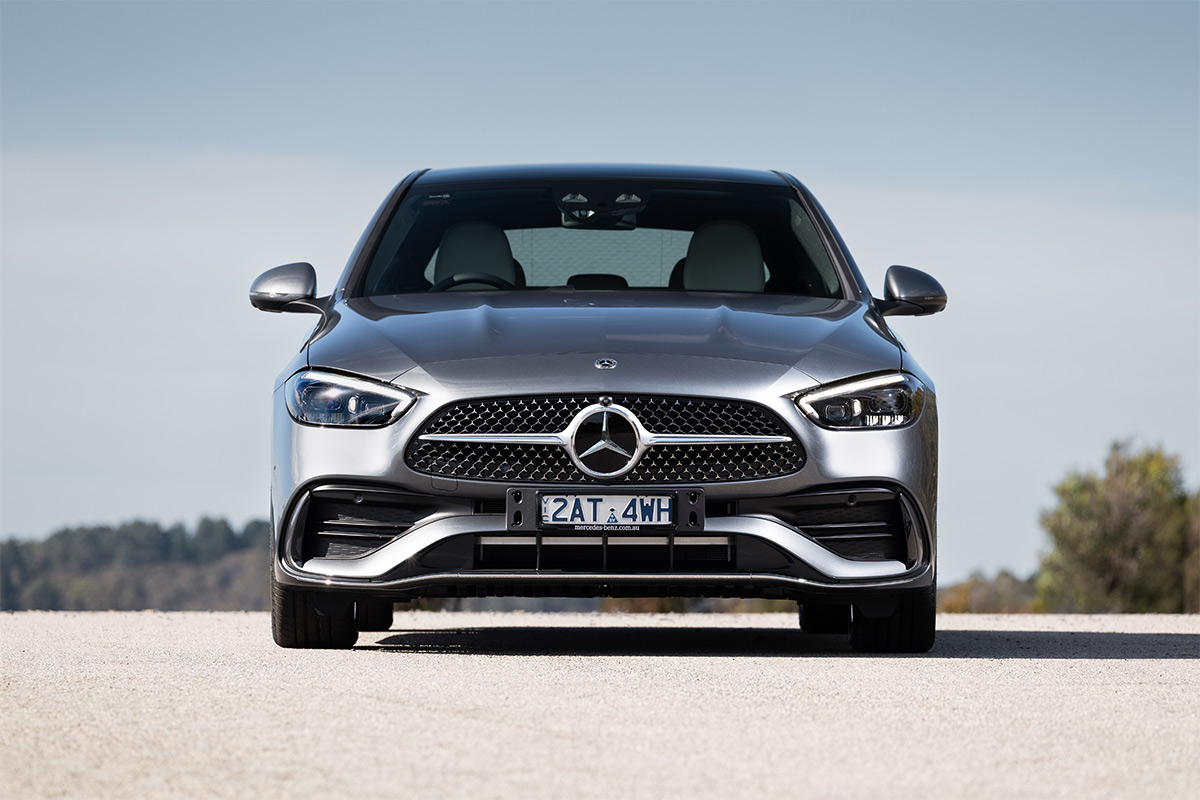
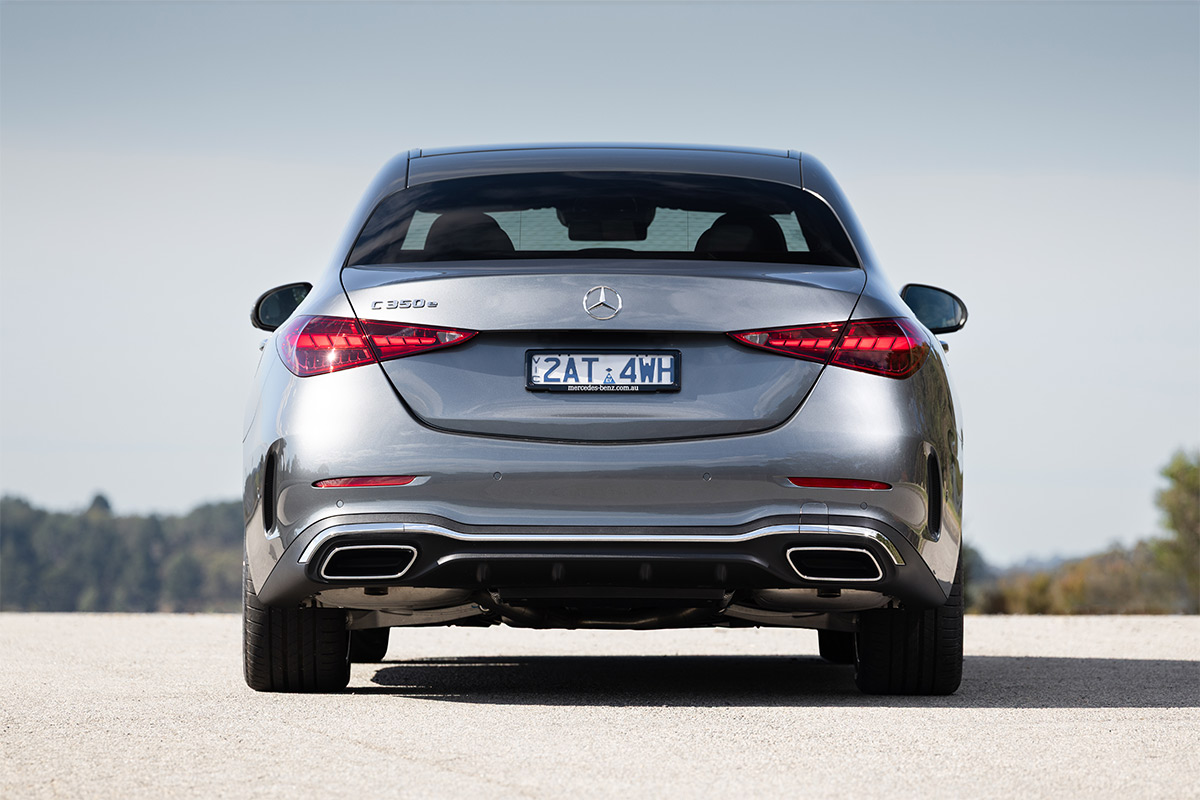
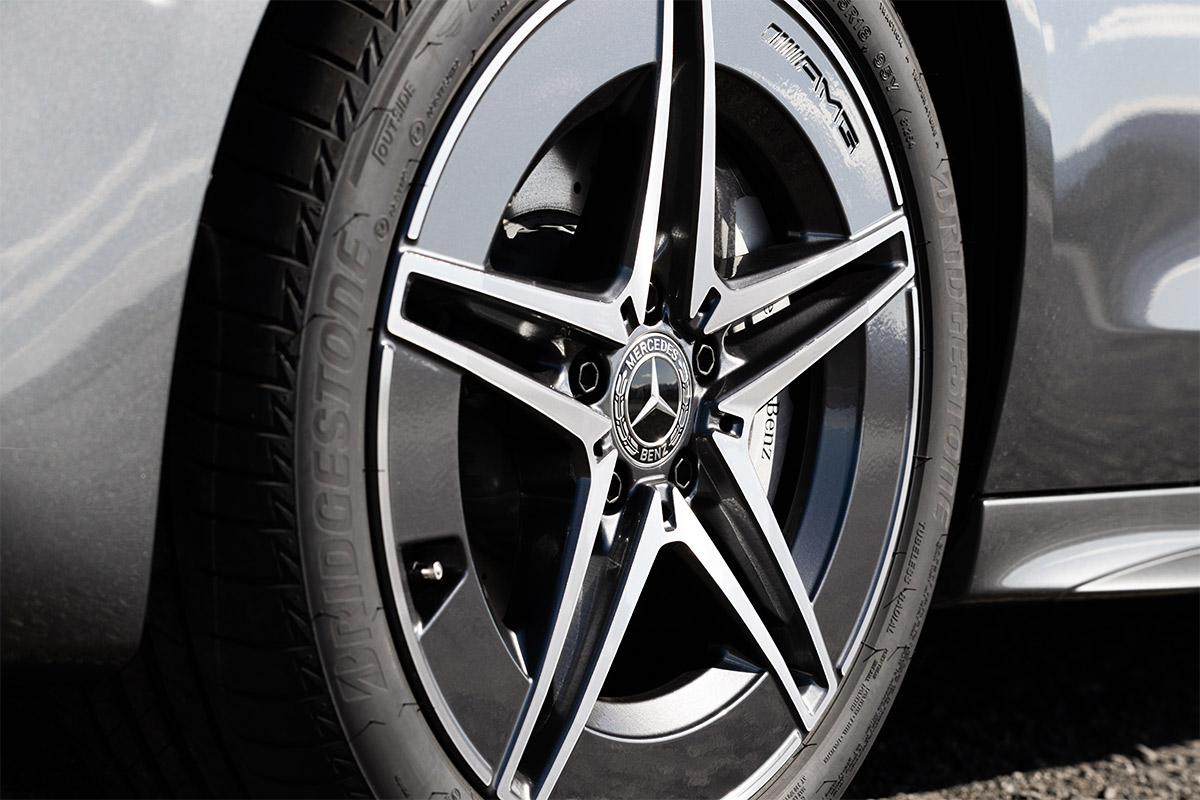
Both GLC350e and CLE350e are beautifully finished inside with Goldilocks-sized screens, plenty of passenger space, abundant comfort and general luxe vibes.
Sitting inside either will feel like a treat for most, even in their base specs. While the more spoilt among us will rue the lack of full Nappa leather, Mercedes-Benz’s Artico – effectively posh vinyl – does a convincing impression of leather and feels nice enough.
For tech, there’s an 11.9-inch portrait infotainment touchscreen with responsive, easy-to-use software (that’s looking in need of a revamp to this road-tester’s eyes) and a clear, 12.3-inch digital instrument cluster, with an additional heads-up display.
Of course, there’s wireless Apple CarPlay and wireless Android Auto, and a wireless phone charger in both GLC350e and C350e (it is 2025, after all). Mercedes’ in-built voice control – say “hey, Mercedes” followed by a multitude of possible commands – is also very good.
In an age where many manufacturers are fitting more ‘open’ centre console designs, the tall and wide transmission tunnel and centre console of both these Mercs give a sense of being well ensconced within the car – but they also do no favours for maximising a feeling of space.
Build quality feels better than what we remember from some Mercedes-Benz test cars from five years ago. Both cars have acceptably spacious, light-filled back seats and the GLC350e, plenty of luggage space at 590 litres. Less so in the C350e, where the battery has reduced the boot from 455 litres to 315 litres. Open the boot and the smaller capacity is quite noticeable.
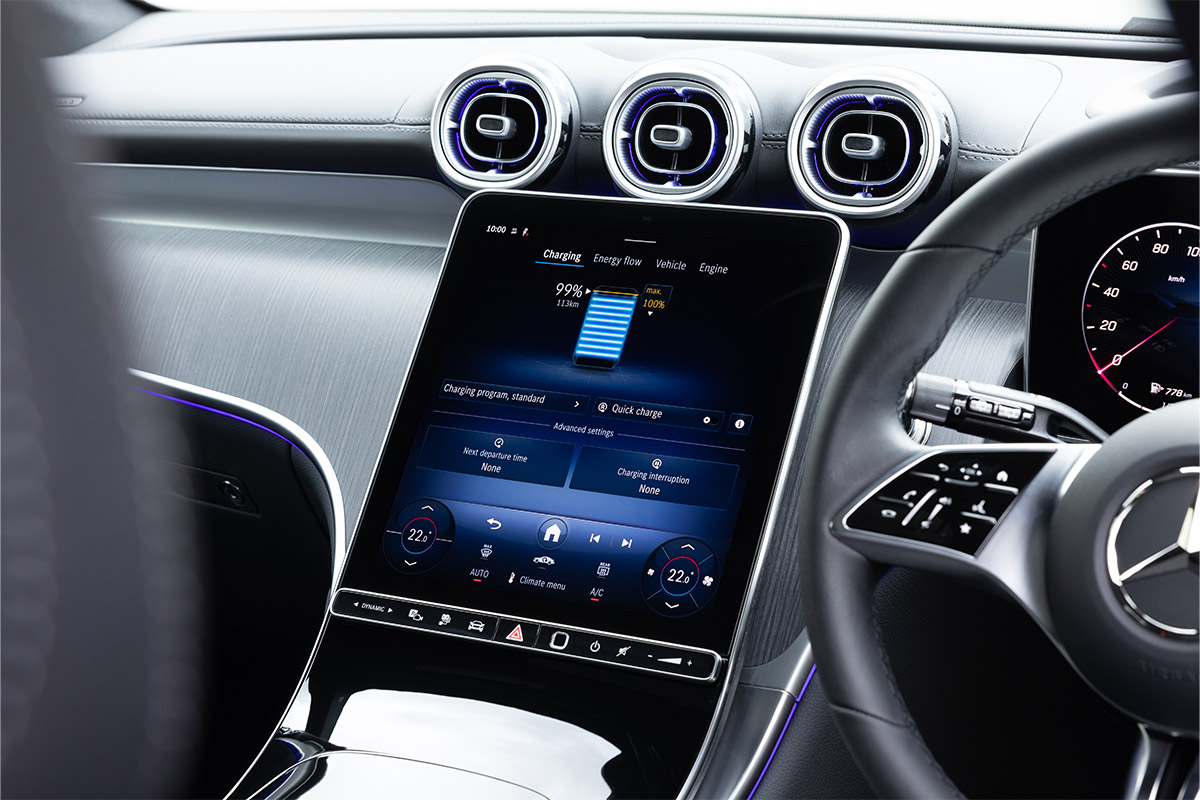
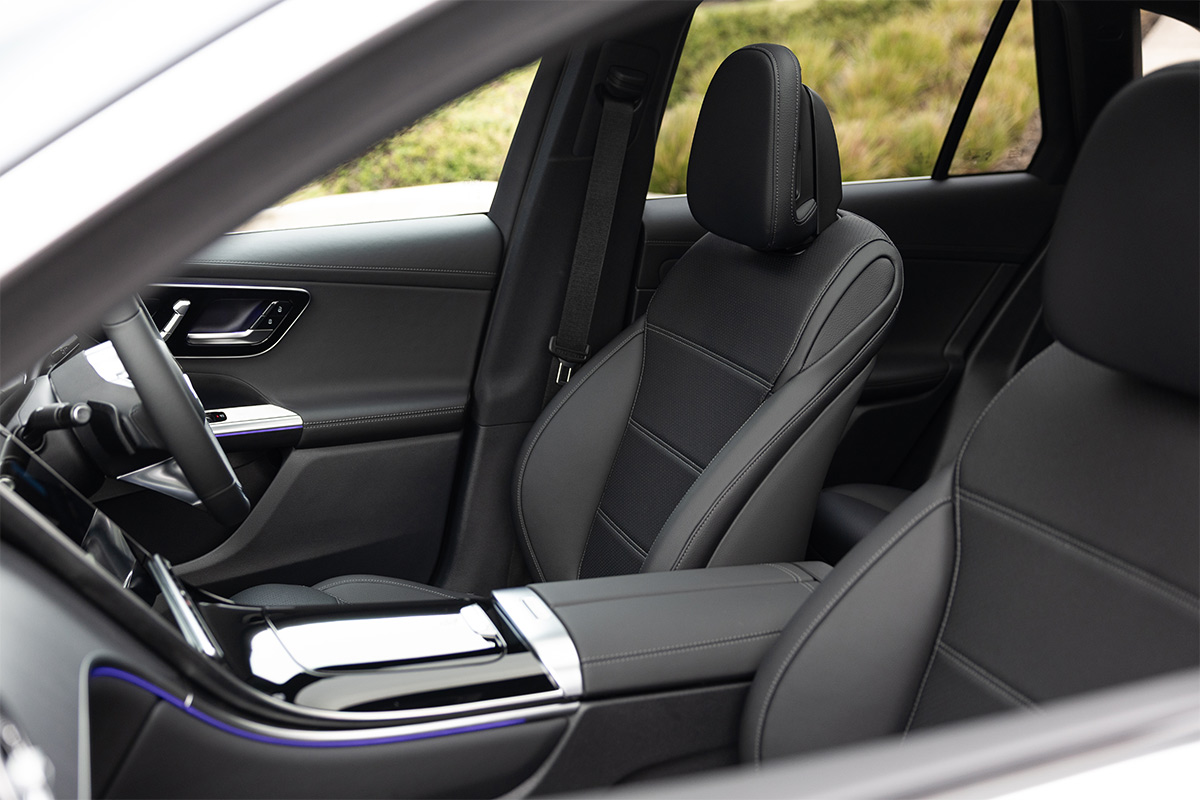
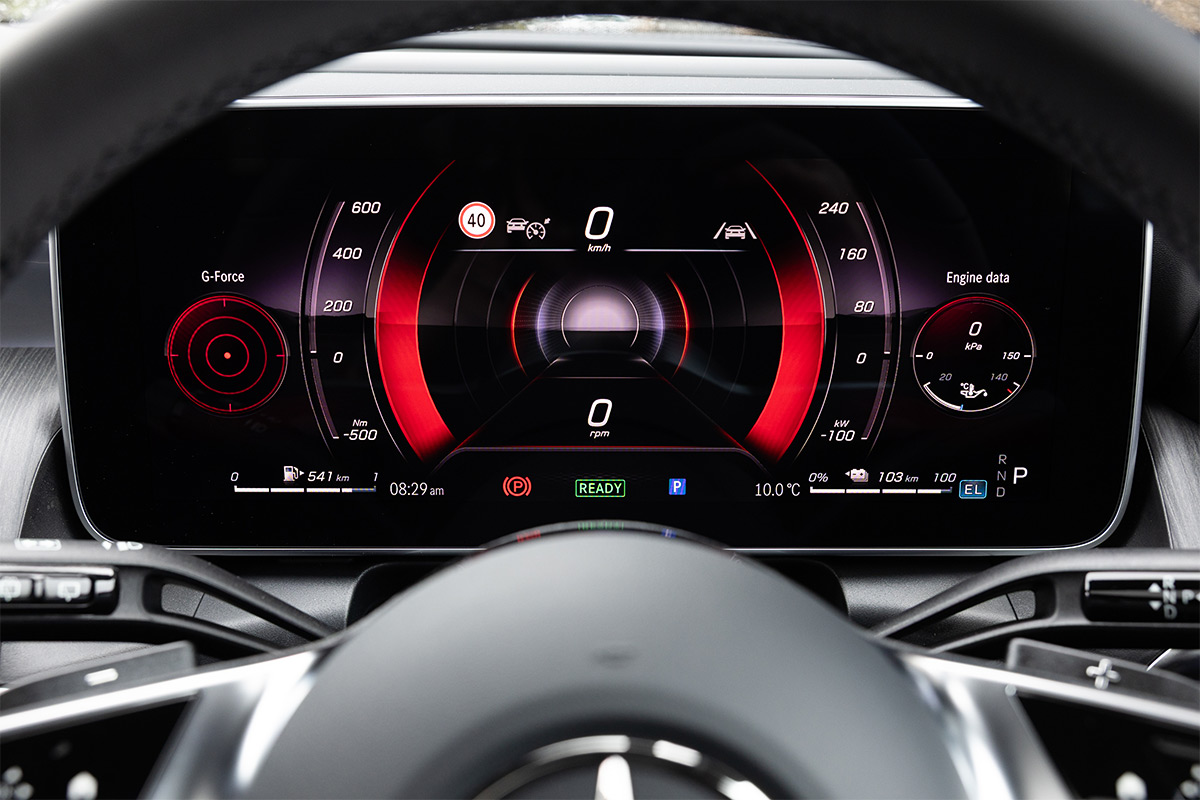
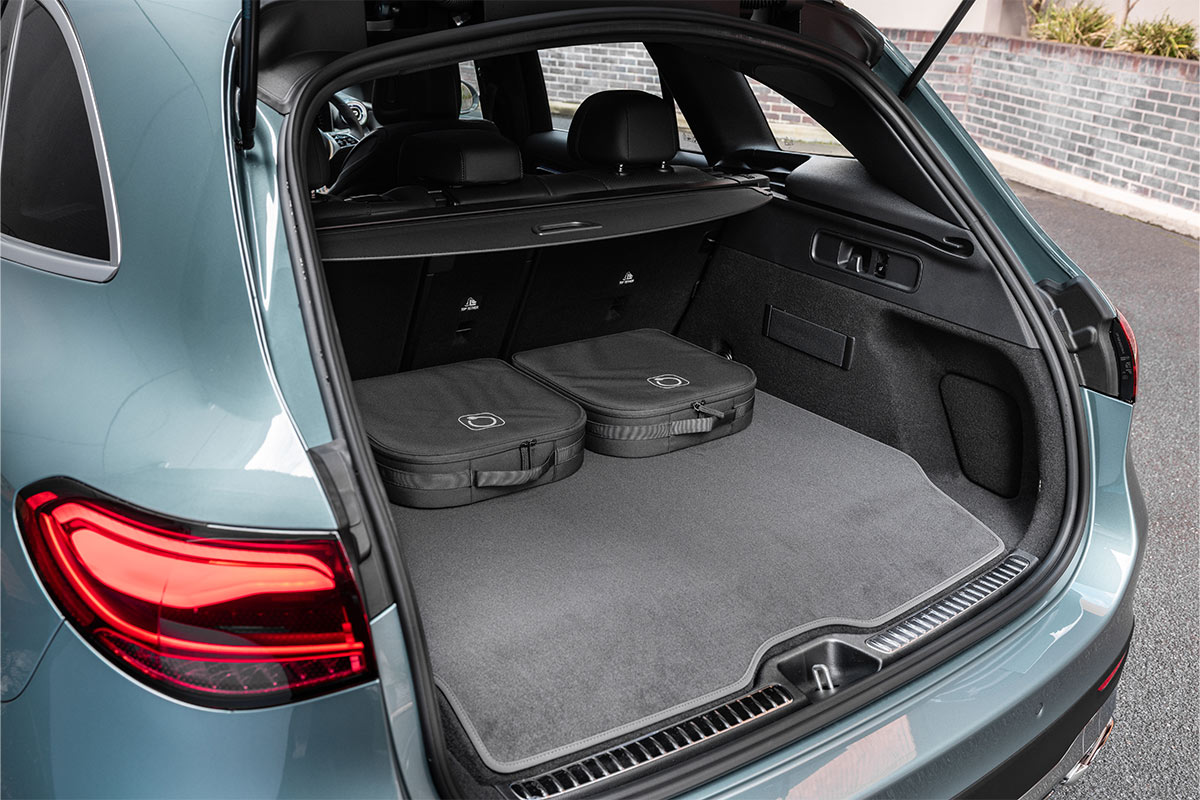
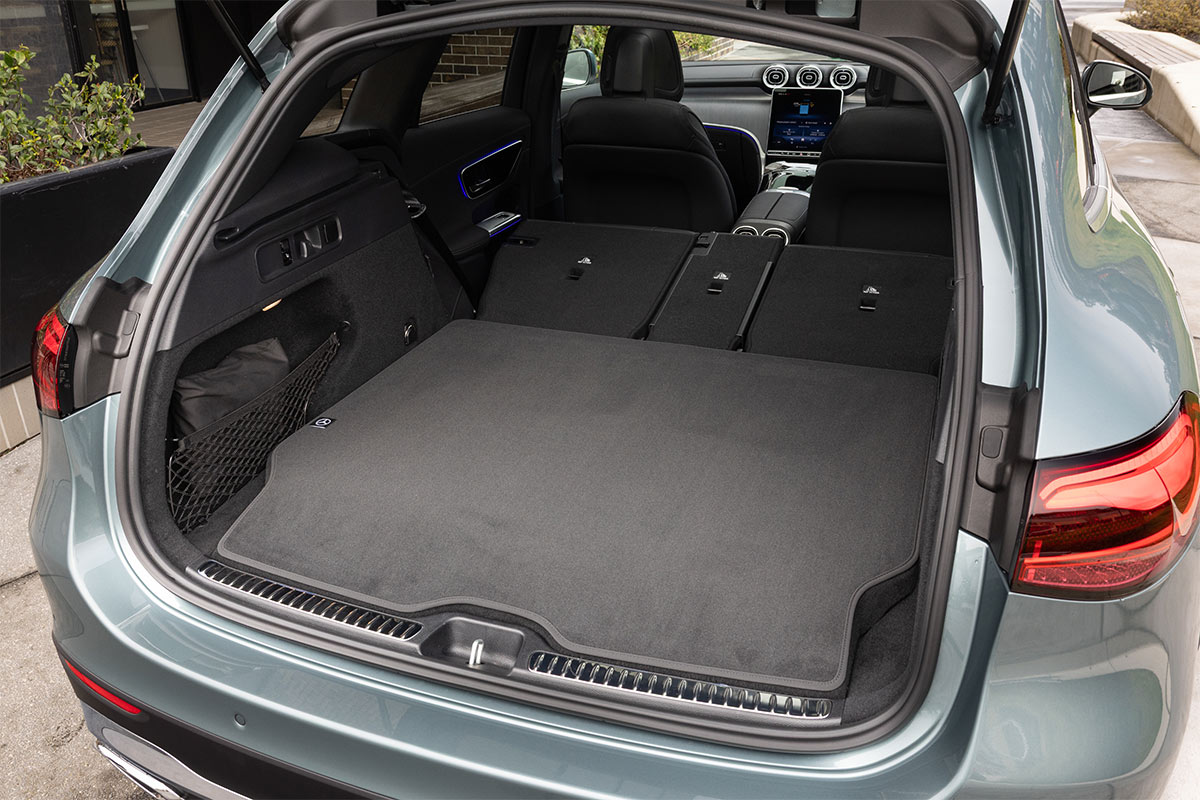
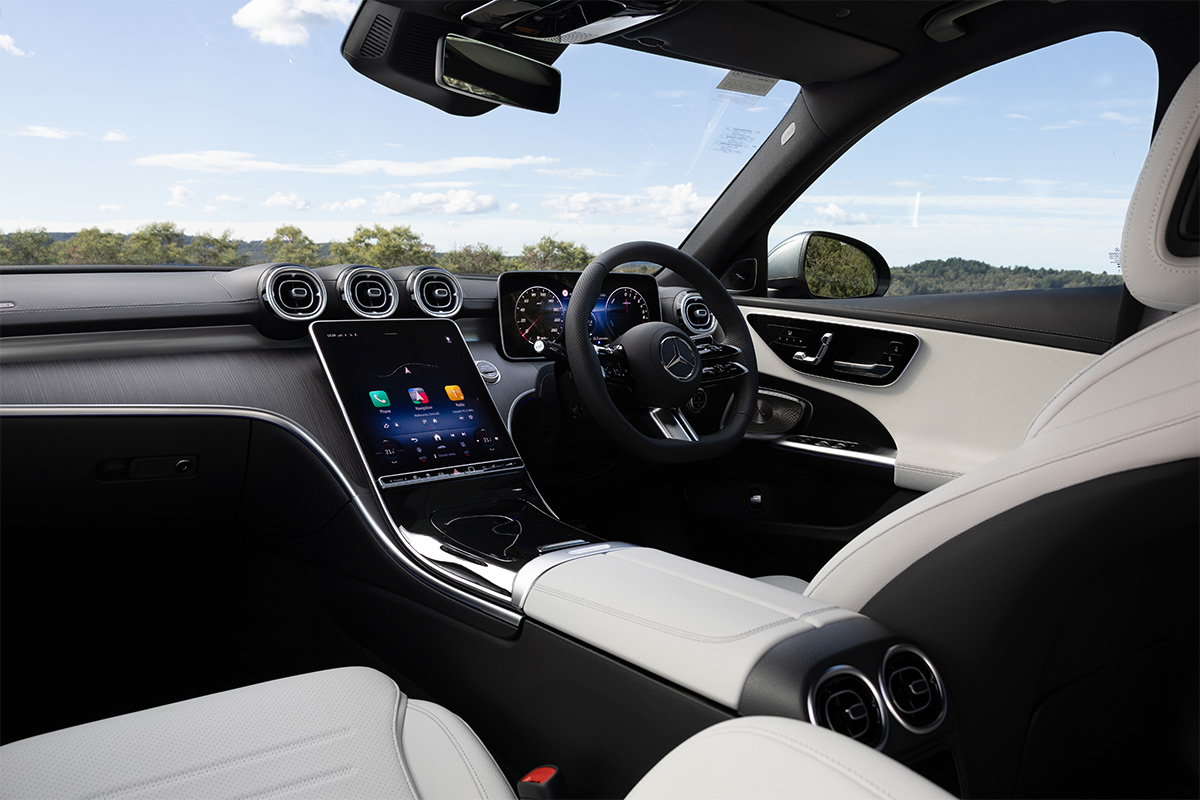
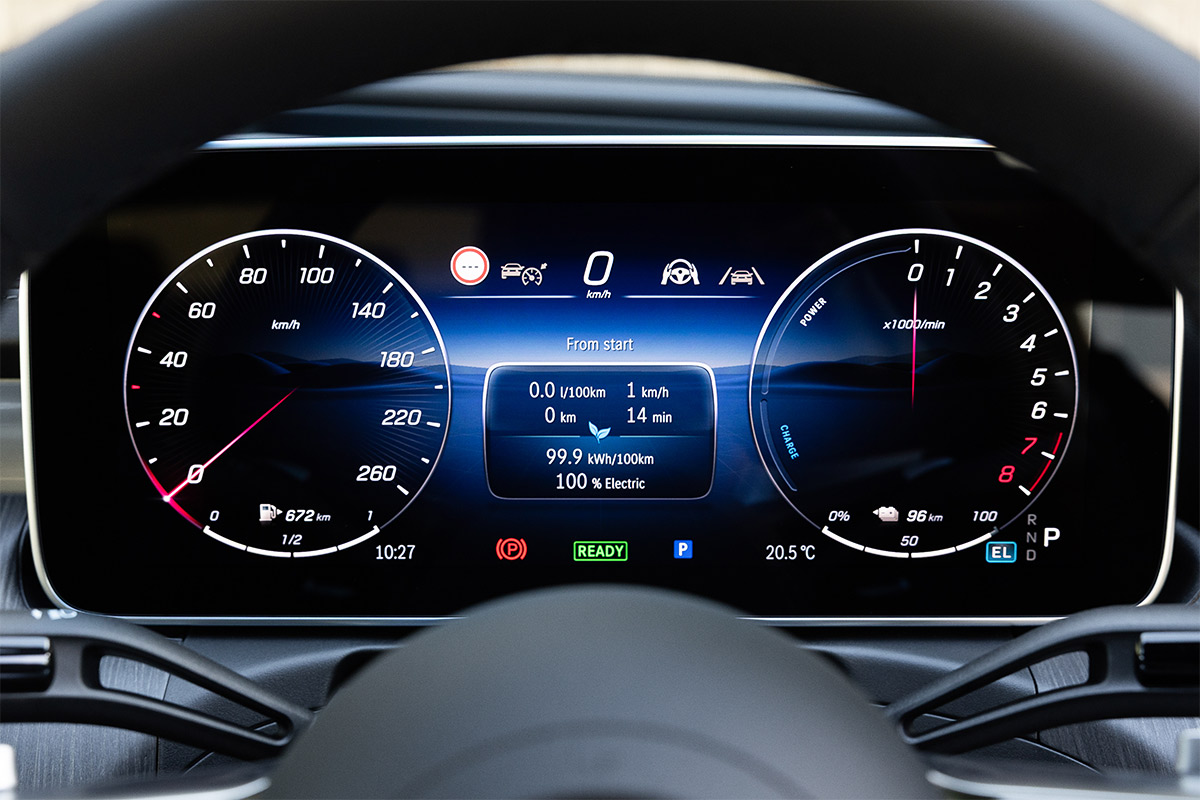
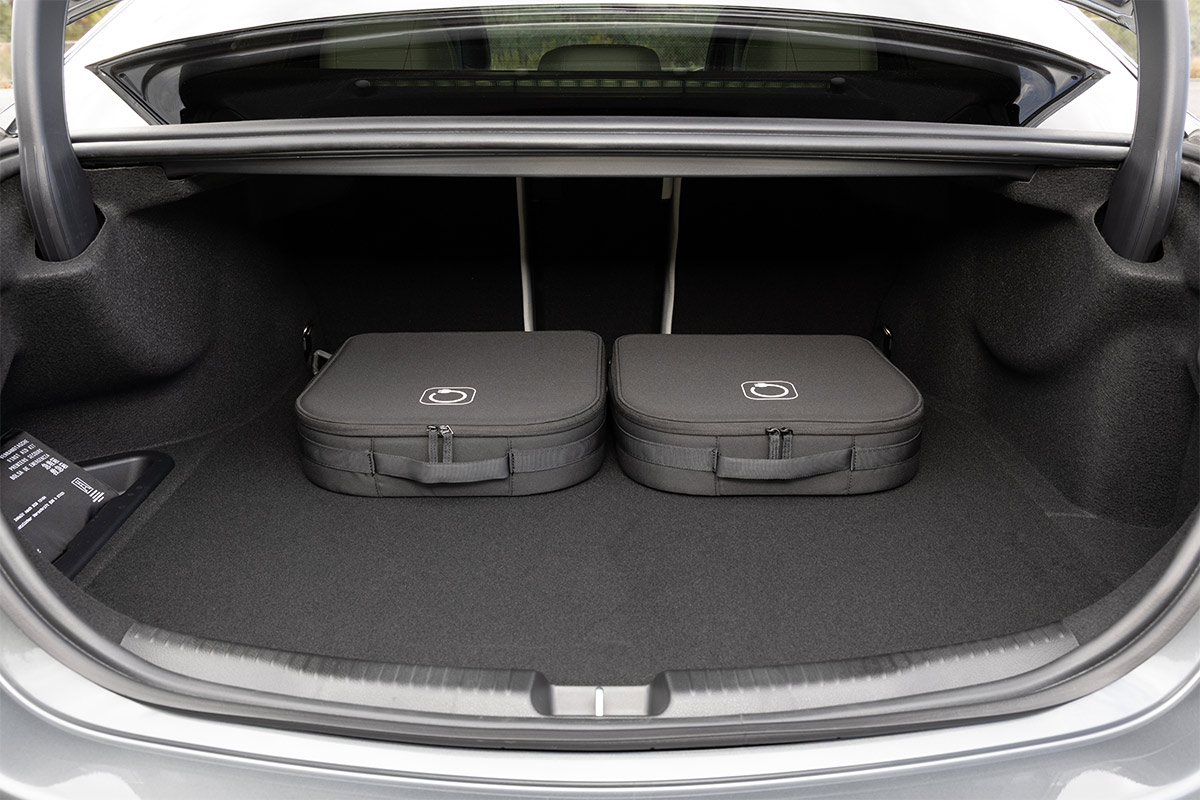
Both GLC350e and C350e come with long lists of standard equipment.
In base spec, GLC350e standard equipment highlights include AMG Line exterior with 19-inch wheels, ‘Artico’ artificial leather-feel upholstery, heated front seats with electric adjustment and memory, heads-up display, panoramic sliding sunroof, electric opening tailgate and 360-degree parking camera.
Options are a Plus Package with a Burmester 15-speaker stereo, Sport Package with a racier interior and 20-inch wheels and a sweet Night Package with blacked-out exterior bits.
The C350e isn’t dissimilarly specified, and standard equipment highlights include 18-inch wheels, sportier front seats and the AMG Line exterior styling. No Night Package here; larger 19-inch wheels are optional, but we kinda dig the AMG aero-disc 18s.
Mercedes-Benz offers a five-year, unlimited kilometre warranty in Australia.
As you’d expect from the brand that helped pioneer ABS, ESC, airbags and crumple zones – each innovation has saved innumerable lives – any modern Mercedes-Benz is very safe. Both the current GLC and C-Class have five-star ANCAP safety ratings, both tested in 2022.
And both cars have every conceivable safety feature you could want in 2025, from advanced autonomous emergency braking (AEB) to a front-centre airbag. Active driver aids include active and emergency lane-keeping and semi-autonomous adaptive cruise control, while the AEB is equipped with pedestrian and cyclist detection, junction assist and works in reverse.
There’s a lot of technology going on under your right foot, so bear with us.
Both GLC350e and C350e are powered by a 1999cc turbo-petrol four-cylinder engine, paired with a single electric motor and lithium-ion battery pack mounted over the rear axle (developed in-house at Mercedes-Benz). Both cars come with a nine-speed automatic transmission.
The M254 combustion engine produces 150kW and 320Nm and in the GLC350e, works with a 115kW electric motor. In the C350e, the electric motor produces 95kW. Electric motor torque is 440Nm in both cars, and outputs are likewise identically 230kW and 550Nm.
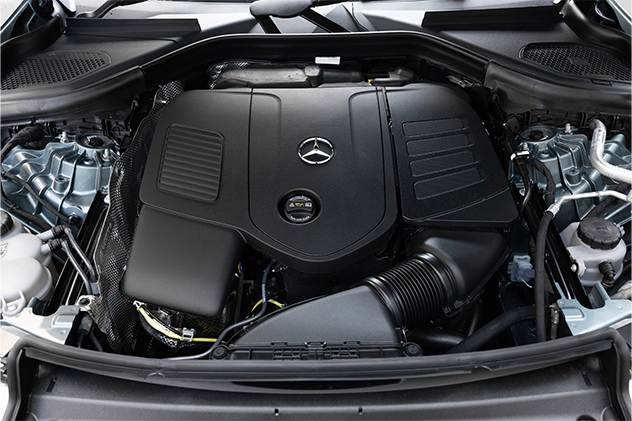
Image: Mercedes-Benz GLC350e engine
Both cars support a maximum 11kW AC recharging capability, good for a two-hour recharge (with the extra cost of a wall-box plus installation). For many PHEV owners, the trickle ‘granny’ charger that comes with the car will more than suffice with an overnight charge.
If you want to recharge using a public DC fast-charger, Mercedes-Benz offers up to 60kW DC capability on GLC350e and up to 55kW on C350e, as a $1500 option on both models. You could stop on the Hume for lunch, plug the car in and go from zero charge to 80 percent in 20 minutes (with a few dirty looks from waiting Tesla owners thrown in for good measure).
— Dylan Campbell
Both the GLC350e and C350e improve your mood the longer you drive them.
Jumping in first the GLC350e with a fully charged battery, we select ‘Electric only’ mode (there’s also Hybrid, Sport and a setting for saving battery charge for later use). There’s plenty of smooth, responsive electric-only power for getting around the city, with some adjustable brake regeneration on offer as well.
This GLC is the only model in the range with standard, self-levelling rear air suspension, fitted to help manage the extra weight of the rear-mounted 25.28kWh (usable) battery. This means the ride quality is very pleasant, even on the 20-inch wheels of the optional Sport Package, which we also tested.
While not being an AMG – and despite weighing 2316kg – the GLC350e confidently tackles corners on a winding road with fuss-free roadholding and plenty of grip, while the direct and keen steering is also a delight.
When the battery is fully depleted, it’s very difficult to notice the powertrain swapping between petrol and electric.
Going to the C350e and the first thing you notice is how low you’re sitting compared to the GLC – and this is partly why it’s fantastic to drive, offering all the handling confidence of the GLC350e in a more lowly-slung sedan package. Press the accelerator and like its SUV brethren, it’s a buzz to feel so much technology all working in perfect, German-engineered unison – electric motor torque-filling at low revs, a turbocharger audibly hissing under load, and the nine-speed transmission smooth as a chronometer watch.
Even in electric-only mode (which works up to 140km/h, same as the GLC350e) the C350e with its instant, near-silent torque is zippy to the point of being fun. Also featuring rear air suspension as standard, the C350e offers superb ride comfort (even on 2025 Victorian roads).
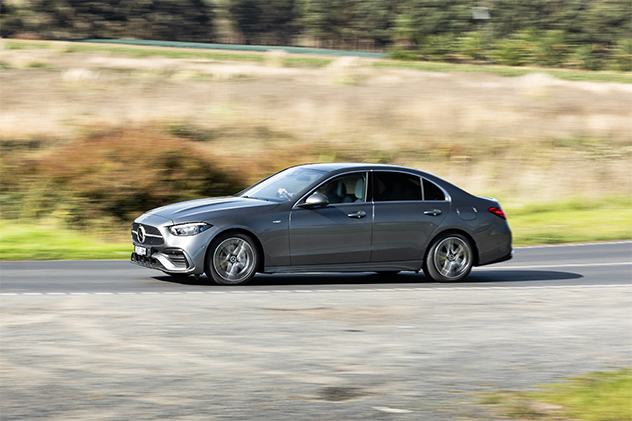
Find yourself on a winding road, as we did in Melbourne’s surrounds, and the C350e does its best impression of its (much more serious) C63 AMG bigger brother. While its soft suspension and leisurely transmission are obviously intended for comfort, they put on a pretty good performance in Sport mode (again, despite a 2100kg tare mass). A rorty, four-cylinder engine sound in the upper revs adds a bit of interest, too.
Gripes are very few but one is that with sturdier applications – like when enjoying the performance on a winding road – the brake pedal, imbued with doubtlessly complex regenerative software, can feel a bit spongy and numb.
For electric-only range, the C350e gets a slightly smaller, 19.53kWh (usable) battery. That means it can cover up to 103km (WLTP) in electric-only mode, versus 107km for the GLC350e. Mercedes-Benz supplied us fuel efficiency figures for a totally depleted battery of 7.6L/100km (C350e) and 7.8L/100km (GLC350e).
During our testing, we didn’t drive in any particularly economical way, yet the GLC350e recorded 24.2kWh/100km having covered 85km using nothing but electrons, with 17km of estimated range remaining, suggesting its EV-only range figures are spot-on.
Over 25km of mixed urban hybrid driving, the GLC350e recorded a very respectable 6.3L/100km in battery ‘hold’ mode (having instructed the car to use no electric energy).
The PHEV is taking off in Australia, and it’s not hard to see why. A PHEV is a great way to extract more value from home solar, and even better if you can charge at work during the day on the boss’s time. At the very least, when paired with an off-peak EV electricity plan, the savings can be significant if you drive a lot. And unlike a full EV, spontaneous road trips remain fully on the table.
Of course, there’s little point bothering with a PHEV if you’ve got nowhere to plug it in, or are the forgetful type. They’re not for everyone.
If neither of those things apply, the $10,900 premium over the base GLC200 for the GLC350e may be considered a long-term investment. The same rings true of the C350e for those craving a more classic rear-drive sedan. Both are great to drive, and both put BMW well on notice.